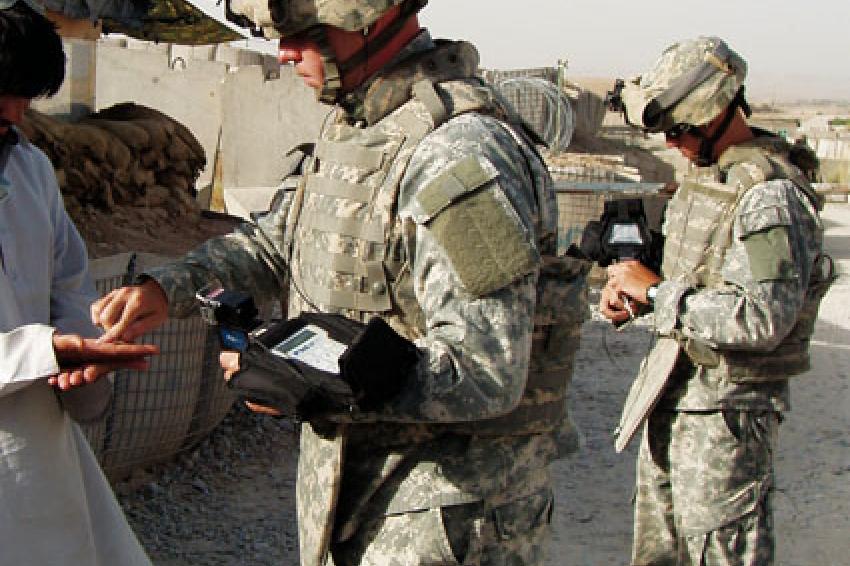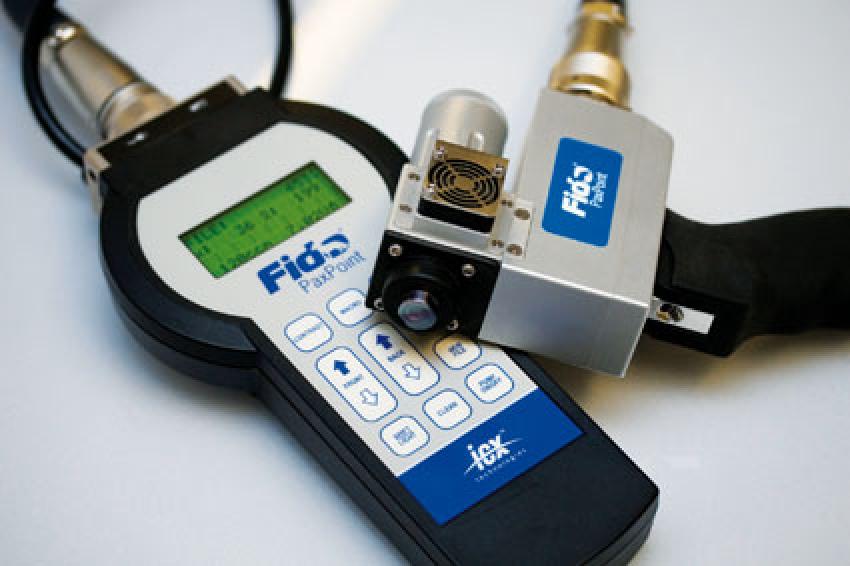Detecting Plastic and other Explosives at Molecular Level
29.09.2011 - Unfortunately, some explosives are easier to detect than others and sniffing out the highly explosive PETN has, until now, been a time-consuming and expensive process. To reliably ...
Unfortunately, some explosives are easier to detect than others and sniffing out the highly explosive PETN has, until now, been a time-consuming and expensive process. To reliably detect just a few small molecules of this material requires cutting-edge trace detector technology based on nanotubes. Working on his doctorate under Professor Wolfgang Ensinger, Head of the Materials Analytics Working Group at the Technical University in Darmstadt in Germany, Mario Boehme has developed an extremely sensitive sensor to do just that.
We can understand just why PETN has been so difficult to detect until now when we compare it with various everyday materials. We can smell a freshly mown lawn from quite some way away, and the baker‘s shop already invites us to stop by from some way down the street. Both the grass and the bread are giving off millions of molecules that our noses can easily detect. However, try to smell a porcelain cup or an aluminum door handle and, no matter how close you get, there‘s nothing much to smell. These materials don‘t give off molecules freely and therefore we can‘t smell them. The same goes for PETN - it is inherently ‚unsmelly‘ and therefore extremely difficult for electronic devices to detect. Further, just a few tiny grams of it are enough to cause a significant explosion.
Of all the various methods of explosives detection - mass spectrometry, chemiluminescence, x-ray diffraction, microcantilevers and electrochemical methods - the advent of nanotechnology over the past few years has brought the most impetus into the development of handheld trace detection devices.
It is clearly the way to go and promises astounding performance at sensitivity levels that, until recently, were only seen in science fiction films. In fact, the scale of measurement has taken on a new dimension; devices were previously rated at finding parts per million or billion (109), but now sensors are becoming effective - and reliable - in the area of parts per trillion (1012) or quadrillion (1015).
Who Nose Best
Whereas finding concealed explosives was once only commonplace at airports and embassies, it has now become an ever-higher priority at a number of other locations and situations; at vehicle entrances and major sporting events for example, at concerts and in popular clubs, at courts or correctional institutions or on public transport systems to name just a few. The usual technique is to sample the air around vehicles, luggage or people, passing it over sensors that react to various specific triggers, although testing for PETN has until recently involved a time-consuming analysis of smears with a spectrometer.
An ‚electronic nose‘ is equipped with either a sensor specifically tuned to one type of explosive, or with many sensors that together provide a ‚fingerprint‘ of the substance. The sensors themselves use various methods to sound the alarm. There are biological sensors that rely on a chemical reaction and optical sensors that notice a change in the absorbence of specific wavelengths of light. There are also mechanical sensors - called cantilevers - that have one fixed end and bend when molecules of the target substance react with a chemical layer on one side. And now the nanosensors either change their natural fluorescence or their electrical conductivity in the presence of specific substances. The Massachusetts Institute of Technology in Cambridge, USA, did some pioneering work on improving the sensitivity of sensors using blue lasers some years ago and its continuing work has recently discovered a useful detection effect of bee venom applied to nanotubes.
Made to Measure
The production of nanotube-based sensors is now refined to a degree where they can be doped with various substances to provide both reliable and, importantly, very specific detection properties. The resultant sensors are cheap to produce commercially and are spawning a new generation of products that can be widely used to counter the terrorist threat. There is enormous potential in this technology that will also result in other new products appearing outside the security industry, and the development of nanosensors is already moving fast.
The challenge now, however, is to integrate these sensors into market-ready products that will alert to the presence of one or more of the more than one hundred different types of military and civilian explosives. There are a number of aspects to consider; for example, many different types of molecules go by as the sampled air is passed across the sensor. This can cause cross-contamination that obviously has to be removed before the sensor can work effectively again. Further, the humidity of the air currently has a significant effect on performance and must be controlled. Another potential issue is when molecules from another substance but nevertheless very similar to those being sought are detected. Certain synthetic products from the perfume industry can cause false positives.
Tangible Benefits
In just a very few years this exciting new generation of sensors has started to come into general use, and security managers around the world can already start to consider how a far more sensitive device will affect their security procedures. The new products will most likely not initially be suitable for detecting explosives at a distance but will certainly be much more effective for close range trace scanning of suspect clothing and baggage than the early generation of handheld products. This may come as unwelcome news to our lovable four-legged friends who currently carry out excellent work using their wet noses and are still by far the most effective detector to date. Current development efforts are aimed at incorporating these sensors into explosives trace portals to provide high throughput combined with extreme sensitivity, an order of magnitude better than the current ion mobility spectrometry systems. Devices that combine and evaluate a number of different sensing methods will provide the best overall detection results.
The protagonists in the handheld explosives detector market include some of those who also manufacture x-ray and millimeter-based scanning portal products. The complete set of detection equipment for narcotics, weapons, dangerous chemicals and explosives must currently include rapid-pass people scanning portals and smaller portable scanners for more detailed inspection, possibly with a fine analysis device available in the background to produce documentary evidence. With the forthcoming lifting of restrictions on carry-on liquids on aircraft, the race is on amongst manufacturers to have highly effective hazardous liquid detectors market-ready in time.
Market Overview
When making your choice of supplier however, care must be exercised as there are a number of apparently useless handheld devices on the market, some the subject of international fraud investigations, that immorally put the lives of the armed forces, the police and civilians at risk by claiming astounding performance through concrete walls or by simply walking down a street, even finding landmines and weapons by using ‚passive‘ methods. The underlying ‚technology‘ is very questionable and has been proven totally unreliable in some controlled tests. Clones and copycat products have appeared under different names in other countries but all depend upon the antenna physically moving like a divining rod when explosives are nearby. We hasten to add that the companies listed below are in no way associated with such products and all employ scientifically proven methods of detection!
Flir, for example, market the handheld Fido XT manufactured by ICx Technologies which uses fluorescent polymer reaction to detect explosive molecules. The system consists of a sensor head and a separate electronics unit, enabling the head to be remotely operated, for example on board a robotic vehicle. An adaption is also available fur use underwater. The EVD series of handheld detectors is manufactured by Scintrex Trace in Canada. Their electrochemical process takes between 15 and 40 seconds to provide an analysis of the sampled air.
Smiths Detection offer the Multi-Mode Threat Detector (MMTD) that also detects narcotics, toxic chemicals and chemical warfare agents in one system. It uses ion mobility spectrometry to analyze particulates and vapor. The Mobiletrace handhelds are available from Safran Morpho and feature very simple operation and a color LCD touchscreen with eight standard languages on board. Its dual-mode function enables the simultaneous detection of narcotics and explosives. As the product name suggest, the Explonix from RS Dynamics is a fast response portable explosives and analytics system. It has a high resistance to overload and cross-contamination with a wide range of detected compounds.











